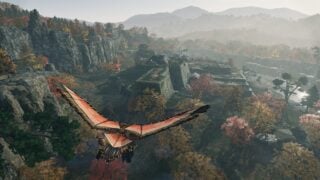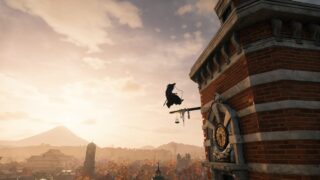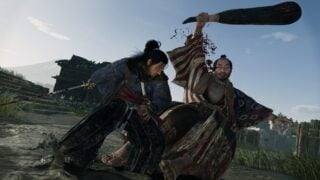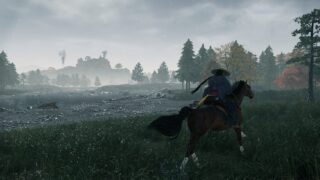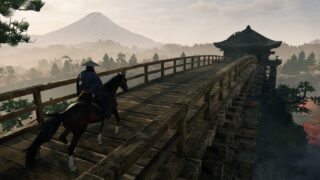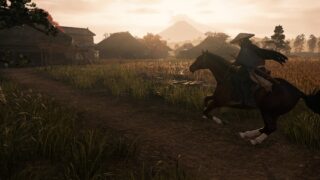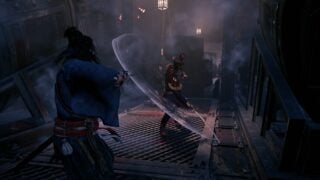Rise of the Ronin’s great combat can’t elevate a pedestrian open world
Team Ninja delivers a jack of many trades, but it fails to double down on any of them
- Director
- Fumihiko Yasuda
- Key Credits
- Yosuke Hayashi (Producer), Inon Zur (Composer)

Rise of the Ronin is a victim of a genre in decline.
While open-world action games have become a permanent fixture in the release calendar since the early 2000s, the last half-decade has seen a malaise creep in, as players grow ever more tired of opening an endless map, littered with icons.
There are, of course, games that rise above this station, such as FromSoftware‘s seminal Elden Ring, but there’s a growing sense that in the realm of massive maps, millions of objectives, towers to climb-style games, it’s not enough to be a good one of those to stand out. Rise of the Ronin is a good one of those, but it never stands out.
Rise of the Ronin is very much a “Now, that’s what I call open-world games,” compilation. Within the first hours, you’ll be reminded of Assassin’s Creed, Ghost of Tsushima, and Sekiro: Shadow’s Die Twice.
Being reminiscent of a game is no crime, and the director Fumihiko Yasuda even cited Red Dead Redemption and Assassin’s Creed as inspirations for the game in a forthcoming interview with VGC, but it becomes a crutch when one starts to feel like they’d rather play the inspiration, rather than that which it inspired.
You get the feeling that being Team Ninja‘s first fully open-world game, the developer felt obliged to include all of the monotonous side content that was novel a decade ago but has achieved meme-worthy status in the subsequent years. None of it is offensive, but it would be a net positive if they were all removed. This is except for certain roaming sub-boss fights that you can stumble into, suddenly turning the game into a classic Nioh-style experience. One vs one sword battles, pure mechanics, no fluff.
It’s not just the open-world sensibilities that feel dated, the game looks incredibly dated too. It’s very colourful, and from an art perspective the game is strong, but from a technical perspective, it feels a decade behind genre stable-mates. This can be offset by using the game’s visuals-focussed graphics mode, but this is Team Ninja, if you’re not prioritizing frame rate, what are you doing?
As with all Team Ninja games, the combat is Rise of the Ronin’s strong suit. During combat, you’ll mainly be focussing on reading enemy attacks and reposting in turn. Doing this will weaken the enemy’s composure and allow you to deal more significant damage. In one vs one battles, this can be a fun challenge, pitting your wits against the enemy, but it becomes somewhat unenjoyable when faced with larger groups.
For one, there’s very little in the way of forgiveness when two enemies attack one after another, but too quickly to parry twice. One could look at this and argue that you shouldn’t get into a situation in which you’re surrounded by enemies, plenty of the game’s missions surround you in this way with little recourse. The game’s combat is at its best when you can sneak around an enemy camp, whittling down your foes until only the boss remains.
“You get the feeling that being Team Ninja’s first fully open-world game, the developer felt obliged to include all of the monotonous side content that was novel a decade ago but has achieved meme-worthy status in the subsequent years.”
There are several different fighting styles, which can be swapped between freely. Each enemy you face will have resistance and strengths to each style, meaning you have to adapt in order to be effective against your foes. This is not unlike Ronin’s predecessor, Nioh. There are a large number of primary and side weapons, meaning there’s a decent amount of variety to the combat. The combat is enjoyable throughout and carries what are otherwise some incredibly dull side missions.
The game follows your custom character as they travel across a pre-Tokyo Japanese coast on the path to becoming a fearsome Ronin. The game is set during the Bakumatsu period of Japanese history. This is a time of great transition in Japan, and the game uses this to its advantage by filling the story with interesting characters.
The political machinations of the main story amount to the best narrative in a Team Ninja game by far, and a more focused, traditional Team Ninja adventure in the same setting would have been far more interesting. In fact, to get the most out of Rise of the Ronin we highly recommend skipping the open world fluff entirely and mainlining the enjoyable campaign.

Rise of the Ronin allows players to follow the story as either a pro or anti-Shogun mercenary, which seems to have a widespread impact in not only the missions you can take on, but the AI co-op partners that will join you on those missions. Almost every mission can be played alone, with AI partners, or with other real players.
In theory, there’s nothing wrong with this, but as previously mentioned, the combat system is at its best when its one on one, so adding anyone else to the party makes things feel utterly unbalanced. There are a few boss fights very clearly designed to be faced by a team of two or more, but there are just as many that completely break, resulting in your AI friend taking the brunt of the damage while you stand behind your foe and slice them to ribbons.
Nothing in Rise of the Ronin is bad. It’s a completely passable game that feels like it would have been much more warmly received by us had the last 8 years of open-world games not happened. In 2024 it feels profoundly dated, and while there is fun to be had in a solid combat system, there’s not much in Rise of the Ronin that you haven’t seen before.
The only exception being the game’s setting and story, which we enjoyed throughout our playthrough, even if the things we were doing in aid of that story weren’t stellar.
Rise of the Ronin is a fine open world adventure that never elevates itself to greatness. Fun Team Ninja combat will drag you through, but pointless open world fluff and questionable visuals sadly result in just another open world game.
- Team Ninja combat never dissapoints
- Bakumatsu period makes for a unique setting
- Pointless open world fluff
- Visually poor
- Derivative





